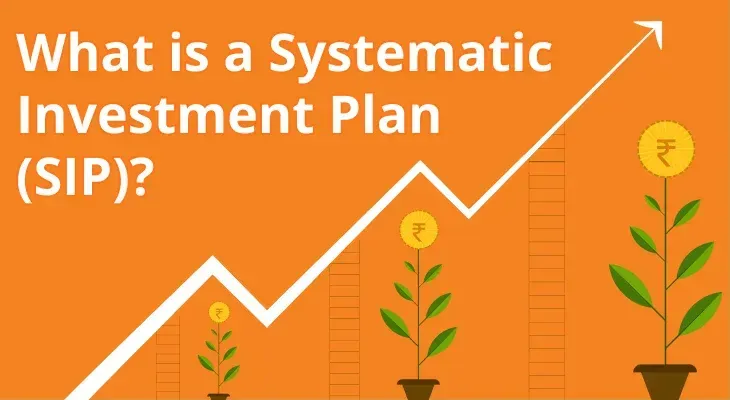
How are ETFs Taxed in India - Taxation of Income from ETFs
Exchange-traded Funds (ETFs) have become a popular investment option in India, offering diversification, liquidity, and cost-effectiveness. However, understanding their taxation is crucial to maximising returns and making informed investment decisions. The tax treatment of ETFs depends on the type of ETF (equity, debt, or international), the holding period, and whether income is earned as capital gains or dividends.
This article provides a comprehensive guide to ETF taxation in India, covering capital gains tax on ETFs, tax implications of international ETFs, dividend taxation, and recent regulatory changes
Taxation on ETFs (Equity & Debt ETFs)
As you may know, Exchange-traded Funds (ETFs) are investment funds that trade on stock exchanges like individual stocks. They pool money from multiple investors to invest in a diversified portfolio of assets, such as equities, bonds, commodities, or international securities When it comes to taxation of ETFs in India, it depends on whether the fund is classified as an equity ETF or a debt ETF:
1. Equity ETFs
Equity ETFs are those that invest a majority of their assets in stocks as their entire exposure is pegged to an index which it tracks. Hence, they are taxed similarly to equity mutual funds or direct stocks.
- Short-Term Capital Gains (STCG): As per Income Tax Act, Section 111A, if units of an ETF are sold within 12 months from when they were purchased, the gains are taxed at 20%.
- Long-Term Capital Gains (LTCG): Under Section 112A, if ETF units are sold after 12 months from when it was purchased, LTCG exceeding ₹1.25 lakh in a financial year is taxed at 12.5%, without any indexation benefits.
For example, if an investor buys equity ETF units worth ₹2 lakh and sells them after 14 months for ₹2.8 lakh, the LTCG is ₹80,000, which is under the ₹1.25 lakh limit This means there will be no tax payable on this LTCG. If the long-term capital gains were ₹1.5 lakh, income tax would apply on ₹25,000 at 12.5%.
On the other hand, if the same units were sold within 12 months for ₹2.5 lakh, then a 20% tax would apply on the short-term capital gains of ₹50,000.
2. Debt ETFs
Debt ETFs primarily invest in bonds, government securities, or other fixed-income instruments. The taxation rules differ from equity ETFs. Up until a 2023, the following were the debt ETF taxation rules:
- Short-Term Capital Gains (STCG): If units were sold within 3 years, gains were added to the investor’s overall income and taxed as per the income tax slab rate.
- Long-Term Capital Gains (LTCG): For units that were held for 3 years or more, LTCG was levied at 20% with indexation benefits, reducing taxable gains.
For example, if an investor bought ₹ 1 Lakh worth of debt ETF units and sold them for ₹1.3 lakh within 2 years, the ₹30,000 profit was taxed as per the investor’s tax slab. If sold after 3 years, tax at 20% after indexation applied, lowering tax liability.
However, this system has undergone a change. Debt ETFs no longer offer indexation benefits. Moreover, the gains made on debt ETFs (irrespective of the holding period) are now taxed as per your individual tax slab. In other words, whenever you redeem the units, the gains will be added to your income and taxed accordingly.
3. Gold ETFs
Gold ETFs are investment instruments that track the price of physical gold and are traded on stock exchanges. They offer investors an easy and cost-effective way to invest in gold without the need for physical storage. However, Gold ETF taxation differed from equity ETFs as they were treated as non-equity investments for tax purposes. For the longest time, Gold ETFs were taxed exactly as debt ETFs, as described above. But this too has undergone a change in the latest budget. Now, capital gains will be applicable on Gold ETFs giving you the benefits of a special 12.5% LTCG tax rate and STCG will be as per your individual tax slab.
Tax Implications for International ETFs
International ETFs that invest in foreign stocks or global indices like Nasdaq 100 ETFs were taxed as debt funds in India, even if they track equity markets.
- STCG (Held < 3 Years): Gains were taxed as per income tax slab rates.
- LTCG (Held ≥ 3 Years): Gains were taxed at 20% with indexation benefits.
However, this too has undergone a change. As per the new guidelines, foreign ETFs are now eligible for LTCG benefits @ 12.5% tax if units are sold after the requisite holding period. For units sold earlier, gains are taxed as per applicable slab rate. The holding period for gains to be classified as long-term, has been changed to two years, from the three earlier.
Additionally, international ETFs may attract foreign taxes (such as US withholding tax on dividends), and investors can claim tax credit benefits under DTAA (Double Taxation Avoidance Agreement).
For instance, if an investor receives 200 as a dividend from a US-based ETF and $30 is deducted as tax in the US, they can claim this as a tax credit when filing Indian tax returns, subject to DTAA provisions.
Short-Term vs Long-Term Capital Gains on ETFs
As you may have already noticed, a key factor in ETF taxation is the holding period, which determines whether the gains are short-term or long-term. Here’s a quick summary for you:
Type of ETF | Short-Term Gains (STCG) | Tax Rate | Long-Term Gains (LTCG) | Tax Rate |
Equity ETFs | < 12 months | 20% | ≥ 12 months | 12.5% (exceeding ₹ 1.25 Lakhs) |
Debt ETFs | As per individual tax slab, irrespective of the holding period. No indexation benefits. | |||
International ETFs | < 2 years | As per tax slab | ≥ 2 years | 12.5% (without indexation) |
Tax Benefits and Deductions for ETF Investments
Unlike ELSS mutual funds, ETFs do not qualify for tax deductions under Section 80C. However, two of the popular tax-saving strategies for ETF investors can include:
- Holding ETFs for the long term to benefit from lower LTCG tax rates.
- Using tax-loss harvesting as a way to offset gains with losses against any gains from other investments.
Impact of Dividends on ETF Taxation
So far, we have been discussing ETF taxation for capital gains only. However, there is another way you can earn income through your Equity ETF investments – in the form of dividends. Many companies (especially the blue-chip ones) pay dividends as a way of rewarding investor loyalty. ETFs may give you the option of reinvesting these dividends to increase your holding value, or receive it as cash in your account.
Dividend income from ETFs is taxable in the hands of the investor, as per their income tax slab rate. Moreover, the fund house deducts TDS (Tax Deducted at Source) at 10% for dividends exceeding ₹5,000 per year.
For example, if you receive ₹20,000 in ETF dividends, the AMC will deduct ₹2,000 as TDS, and you must declare the remaining ₹18,000 as income while filing taxes.
Recent Changes in Taxation Rules for ETFs
In its efforts to simplify taxation rules for investors, the Indian government has revised capital gains tax rules on debt mutual funds and ETFs in recent budgets. Notable changes include:
- Debt and international ETFs no longer enjoy indexation benefits for investments made after April 1, 2023.
- New tax rules treat debt ETFs as short-term assets, regardless of holding period. They are taxed at the individual’s slab rate.
- Gold ETF investments from 31st March, 2025 onwards will come with LTCG benefits and a revised holding period like equity ETFs.
- International ETFs will also offer LTCG benefits with a holding period of 24 months.
It is advisable to regularly check for new tax regulations to optimise your ETF and overall investment portfolio.
Conclusion
ETFs offer a flexible and cost-effective way to invest in equity, debt, and global markets. However, understanding ETF taxation is crucial for maximising returns and avoiding unexpected tax liabilities. Equity ETFs are taxed like stocks, while debt and international ETFs follow debt taxation rules. Investors should consider holding periods, dividends, capital gains tax, and recent tax rule changes while planning ETF investments.
Before investing, consult a tax advisor to ensure compliance with the latest ETF taxation laws and optimise tax-saving strategies.
FAQ
How are equity ETFs taxed in India?
Equity ETFs are taxed like equity mutual funds. Short-term capital gains (if sold within one year) are taxed at 20%, while long-term capital gains (if sold after one year) above ₹1.25 lakh are taxed at 12.5% without indexation.
What is the taxation on debt ETFs?
Debt ETFs are taxed like debt mutual funds and are taxed as per the investor’s income tax slab, irrespective of the holding period.
How are international ETFs taxed in India?
For international ETFs, short-term gains (held for less than two years) are taxed as per the income tax slab, while long-term gains above ₹ 1.25 Lakhs (held for more than two years) are taxed at 12.5% without indexation.
What is the tax on dividends earned from ETFs?
Dividends from ETFs are added to the investor’s total income and taxed as per their applicable income tax slab rate. There is no separate dividend distribution tax (DDT) on ETFs.
Do I have to pay Securities Transaction Tax (STT) on ETFs?
STT is applicable only on equity ETFs when they are sold on stock exchanges. It is 0.001% of the transaction value. Debt and gold ETFs do not attract STT.
How are Gold ETFs taxed in India?
Short-term gains in Gold ETFs (if sold within one year) are taxed as per the income tax slab, while long-term gains above ₹ 1.25 Lakhs (after one year) are taxed at 12.5% without indexation benefits.
What are the tax benefits of investing in ETFs?
ETFs do not offer tax deductions under Section 80C. However, long-term capital gains on equity ETFs up to ₹1.25 lakh are tax-free.
How does taxation differ for ETFs in a SIP investment?
Each SIP instalment in an ETF is treated as a separate investment with its own holding period. The taxation of capital gains is calculated accordingly based on whether the gains are short-term or long-term.
How can I minimise tax liability on ETFs?
You can minimise tax liability by holding equity ETFs for more than one year to benefit from lower LTCG rates and using indexation benefits for long-term debt and gold ETFs.


